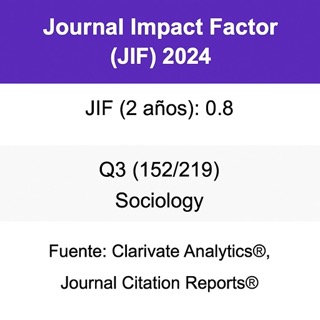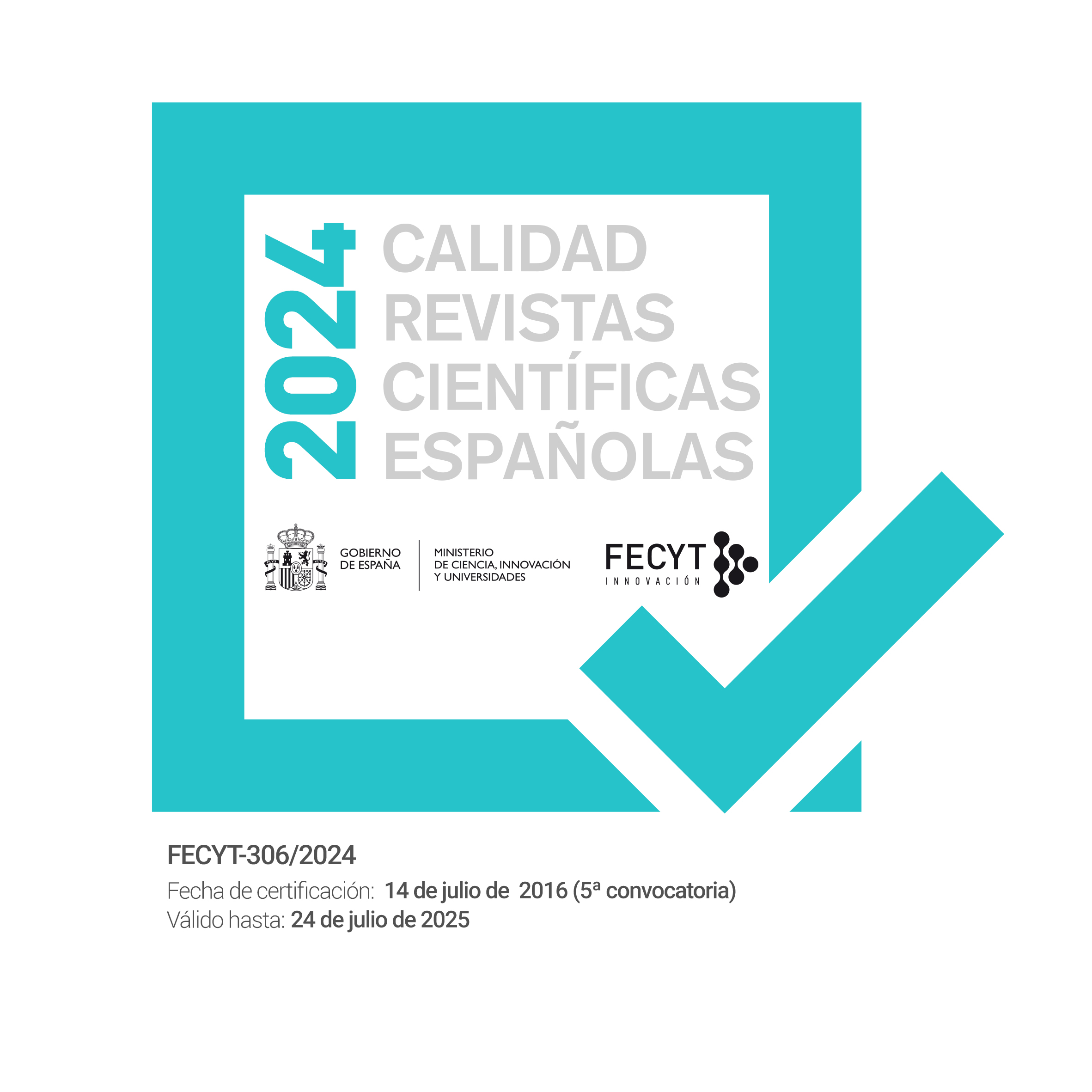Flexibilidad y control: el impacto del teletrabajo sobre la autonomía laboral en Europa
DOI:
https://doi.org/10.22325/fes/res.2025.268Palabras clave:
teletrabajo, autonomía laboral, flexibilidad laboral, control digital, comunicación horizontalResumen
Este artículo analiza el impacto del teletrabajo sobre la autonomía laboral en Europa, a partir de los datos de la Encuesta Social Europea 2020–2022. Se examina cómo las diferentes modalidades de teletrabajo —habitual e híbrido— se relacionan con la percepción de autonomía por parte de los trabajadores. Asimismo, se analiza cómo esta relación está mediada por dinámicas organizacionales como el control empresarial digital y la comunicación horizontal entre compañeros. Los resultados indican que el teletrabajo tiende a aumentar la autonomía percibida, especialmente entre empleados de jerarquías más bajas, quienes manifiestan una menor supervisión directa en comparación con entornos laborales presenciales. Sin embargo, este incremento de autonomía no es uniforme. Los mecanismos de control digital pueden restringirla, mientras que la comunicación entre pares puede actuar como recurso compensatorio. Para ello, se aplica un modelo de regresión múltiple que permite identificar los factores que configuran la percepción de autonomía en contextos de teletrabajo, integrando enfoques teóricos y evidencia empírica.
Citas
Álvarez-Hernández, G., y Pérez-Zapata, O. (2021). Plataformización y gestión "platafórmica": una discusión de las condiciones de trabajo en una plataforma cualificada. Revista Española de Sociología, 30(3), a67. https://doi.org/10.22325/fes/res.2021.67
Ajunwa, I., Crawford, K., y Schultz, J. (2017). Limitless Worker Surveillance. California Law Review, 105(3), 735-776. https://doi.org/10.15779/Z38BR8MF94
Bailey, D., y Kurland, N. (2002). A Review of Telework Research: Findings, New Directions, and Lessons for the Study of Modern Work. Journal of Organizational Behavior, 23(4), 383-400. https://doi.org/10.1002/job.144
Baruch, Y. (2000). Teleworking: Benefits and Pitfalls as Perceived by Professionals and Managers. New Technology, Work and Employment, 15(1), 34-49. https://doi.org/10.1111/1468-005X.00063
Beckel, J., Kunz, J., Prasad, J., Finch, H., y Kaldahl, K. (2023). The impact of telework on conflict between work and family: a meta-analytic investigation. Occupational Health Science, 7, 681-706. https://doi.org/10.1007/s41542-023-00158-8
Beltrán Adulera, L. (2022). Trabajo presencial y teletrabajo. Compatibilidad en una nueva relación laboral. CEOE Aragón. https://ceoearagon.es/wp-content/uploads/2024/04/trabajo-presencial-y-teletrabajo.pdf
Belzunegui, Á., y Erro, A. (2020). Teleworking in the Context of the Covid-19 Crisis. Sustainability, 12(9), 3662. https://doi.org/10.3390/su12093662
Borgatti, S. y Halgin, D. (2011). On Network Theory. Organization Science, 22(5), 1168-1181. https://www.jstor.org/stable/41303110
Burawoy, M. (1990). Manufacturando el consentimiento: Cambios en el proceso de trabajo bajo el capitalismo monopolista. Alianza Editorial.
Burt, R. (2005). Brokerage and Closure: An Introduction to Social Capital. Oxford: Oxford University Press.
Casilli, A. (2021). Esperando a los robots: Investigación sobre el trabajo del clic. Punto de Vista Editores.
Connell, R. (2006). Glass ceilings or gendered institutions? Mapping the gender regimes of public sector workplaces. Public Administration Review, 66(6), 837-849. https://doi.org/10.1111/j.1540-6210.2006.00652.x
Cudanov, M., Cvetkovic, A., y Savoiu, G. (2023). Telework perceptions and factors. What to expect after COVID-19. En M. Mihic, S. Jednak, y G. Savic (Eds.), Sustainable business management and digital transformation: challenges and opportunities in the post-COVID era (pp. 509-524). Springer. https://doi.org/10.1007/978-3-031-18645-5_32
De Vaujany, F., Leclercq-Vandelannoitte, A., Munro, I., Nama, Y., y Holt, R. (2021). Control and Surveillance in Work Practice: Cultivating Paradox in ‘New’ Modes of Organizing. Organization Studies, 42(5), 675-695. https://doi.org/10.1177/01708406211010988
Deci, E., y Ryan, R. (1985). Intrinsic Motivation and Self-Determination in Human Behavior. New York: Plenum Press.
Doeringer, P., y Piore, M. (1971). Internal Labor Markets and Manpower Analysis. Heath Lexington Books.
Edwards, R. (1979). Contested Terrain: The Transformation of the Workplace in the Twentieth Century. Basic Books.
Erro, A. y Belzunegui, Á. (2022). El teletrabajo ante la COVID-19: función estratégica y dimensión organizativa. Técnica económica, 186, 18-23. https://academica-e.unavarra.es/handle/2454/43930
Eurofound (2022). The rise in telework: Impact on working conditions and regulations. Publications Office of the European Union, Luxembourg. https://www.eurofound.europa.eu/en/publications/2022/rise-telework-impact-working-conditions-and-regulations
Eurofound (2023a). Right to disconnect: Implementation and impact at company level. Publications Office of the European Union, Luxembourg. https://www.eurofound.europa.eu/en/publications/2023/right-disconnect-implementation-and-impact-company-level
Eurofound (2023b). The future of telework and hybrid work. Publications Office of the European Union, Luxembourg. https://www.eurofound.europa.eu/en/publications/2023/future-telework-and-hybrid-work
Felstead, A., y Henseke, G. (2017). Assessing the Growth of Remote Working and Its Consequences for Effort, Well-Being and Work-Life Balance. New Technology, Work and Employment, 32(3), 195-212. https://doi.org/10.1111/ntwe.12097
Foucault, M. (1977). Vigilar y castigar: nacimiento de la prisión. Madrid: Siglo XXI Editores.
Gagné, M., y Deci, E. (2005). Self-determination theory and work motivation. Journal of Organizational Behavior, 26(4), 331-362. https://psycnet.apa.org/doi/10.1002/job.322
Gagné, M., Forest, J., Gilbert, M., Aubé, C., Morin, E. y Malorni, A. (2010). The Motivation at Work Scale: Validation Evidence in Two Languages. Educational and Psychological Measurement, 70(4), 628-646. https://doi.org/10.1177/0013164409355698
Gallie, D. (2007). Production regimes and the quality of employment in Europe. Annual Review of Sociology, 33, 85-104. https://doi.org/10.1146/annurev.soc.33.040406.131724
Gálvez, A. (2020). Mujeres y teletrabajo: más allá de la conciliación de la vida laboral y personal. Oikonomics, (13), 1-9. https://doi.org/10.7238/o.n13.2006
Golden, T., y Gajendran, R. (2019). Unpacking the Role of a Telecommuter’s Job in Their Performance: Examining Job Complexity, Problem Solving, Interdependence, and Social Support. Journal of Business and Psychology, 34(1), 55-69. https://doi.org/10.1007/s10869-018-9530-4
Grant, C., Wallace, L., y Spurgeon, P. (2013). An exploration of the psychological factors affecting remote e-worker's job effectiveness, well-being and work-life balance. Employee Relations, 35(5), 527-546. https://doi.org/10.1108/ER-08-2012-0059
Greguras, G. y Diefendorff, J. (2009). Different fits satisfy different needs: Linking person-environment fit to employee commitment and performance using self-determination theory. Journal of Applied Psychology, 94(2), 465-477. https://doi.org/10.1037/a0014068
Griep, Y., Vranjes, I., van Hooff, M., Beckers, D., y Geurts, S. (2021). Technology in the workplace: Opportunities and challenges. En C. Korunka (Ed.), Flexible working practices and approaches: Psychological and social implications (pp. 93-116). Springer. https://link.springer.com/book/10.1007/978-3-030-74128-0
Guidarini, C., y Hussaein, O. (2022). A Systematic Review of How Remote Work Affects Workplace Stress and Mental Health. En V.G. Duffy, M. Ziefle, P. L. P. Rau, y M. M. Tseng, Human-Automation Interaction (pp. 79-96). Springer International Publishing. https://doi.org/10.1007/978-3-031-10788-7_5
Gumbrell-McCornick, R., y Hyman, R. (2013). Trade unions in Western Europe: hard times, hard choices (with a new afterword for the paperback edition). Oxford Univestity Press.
Harvey, D. (2012). El enigma del capital y las crisis del capitalismo. Akal.
Huws, U. (2014). Labor in the Global Digital Economy: The Cybertariat Comes of Age. Monthly Review Press.
Irani, L., y Silberman, M. (2013). Turkopticon: Interrupting worker invisibility in Amazon Mechanical Turk. Proceedings of the SIGCHI Conference on Human Factors in Computing Systems, 611-620. https://doi.org/10.1145/2470654.2470742
Kalleberg, A. (2011). Good Jobs, Bad Jobs: The Rise of Polarized and Precarious Employment Systems in the United States, 1970s to 2000s. Russell Sage Foundation.
Kanter, R. (1977). Men and Women of the Corporation. Basic Books.
Kellogg, K., Valentine, M. y Christin, A. (2020). Algorithms at Work: The New Contested Terrain of Control. Academy of Management Annals, 14(1), 366-410. https://doi.org/10.5465/annals.2018.0174
Laschinger, H., Finegan, J., Shamian, J., y Wilk, P. (2001). Impact of structural and psychological empowerment on job strain in nursing work settings: Expanding Kanter's model. Journal of Nursing Administration, 31(5), 260-272. https://doi.org/10.1097/00005110-200105000-00006
Lopes, H., Lagoa, S., y Calapez, T. (2014). Work autonomy, work pressure, and job satisfaction: An analysis of European Union countries. The Economic and Labour Relations Review, 25(2), 306-326. https://doi.org/10.1177/1035304614533868
Mazmanian, M., Orlikowski, W., y Yates J. (2013). The autonomy paradox: the implications of mobile email devices for knowledge professionals. Organization Science, 24(5), 1337-1357. https://doi.org/10.1287/orsc.1120.0806
Mateescu, A., y Nguyen, A. (2019). Algorithmic Management in the Workplace. Data & Society Report, 1-15. https://datasociety.net/wp-content/uploads/2019/02/DS_Algorithmic_Management_Explainer.pdf
Messenger, J., y Gschwind, L. (2016). Three generations of Telework: New ICTs and the (R)evolution from Home Office to Virtual Office. New Technology, Work and Employment, 31(3), 195-208. https://doi.org/10.1111/ntwe.12073
Moore, P. (2018). The quantified self in precarity: work, technology and what counts. Routledge.
Moreno-Colom, S., Borràs Català, V., Cruz Gómez, I., y Porcel López, S. (2023). La experiencia del trabajo a distancia durante el confinamiento en Cataluña: una aproximación desde la perspectiva de género. Revista Española de Investigaciones Sociológicas, (183), 77-100. https://doi.org/10.5477/cis/reis.183.77
Organización Internacional del Trabajo [OIT] (2020). Lineamientos para la regulación del trabajo a distancia y el teletrabajo. Ginebra: Oficina Regional de la OIT para América y el Caribe. Organización Internacional del Trabajo. https://www.ilo.org/sites/default/files/wcmsp5/groups/public/%40americas/%40ro-lima/%40sro-santiago/documents/publication/wcms_825183.pdf
Pabilonia, S. y Vernon, V. (2022). Telework, Wages, and Time Use in the United States. Review of Economics of the Household, 20(3), 687-734. https://doi.org/10.1007/s11150-022-09601-1
Pérez-Zapata, O., Serrano Pascual, A. y Álvarez-Hernández, G. (2016). Knowledge work intensification and self-management: the autonomy paradox. Work Organisation, Labour and Globalisation,10(2), 27-49. https://doi.org/10.13169/workorgalaboglob.10.2.0027
Riesgo Gómez, V. (2023). Entre el control y el consentimiento. De Braverman a Burawoy en el capitalismo de plataforma. Trabajar para Uber en España. Revista Española de Sociología, 32(3), a175. https://doi.org/10.22325/fes/res.2023.175
Silver, B. (2005). Fuerzas del trabajo: Los movimientos obreros y la globalización desde 1870. Akal.
Sewell, G. y Taskin, L. (2015). Out of Sight, Out of Mind in a New World of Work? Autonomy, Control and Spatiotemporal Scaling in Telework. Organization Studies, 36(11), 1507-1529. https://doi.org/10.1177/0170840615593587
Unión General de Trabajadoras y Trabajadores [UGT] (2022). Teletrabajo y corresponsabilidad: retos sindicales. Madrid: Unión General de Trabajadores. https://www.asnala.com/media/docs/corona/706-Teletrabajo_y_corresponsabilidad_UGT.pdf
van den Broeck, A., Vansteenkiste, M., De Witte, H. y Lens, W. (2010). Capturing autonomy, competence and relatedness at work: Construction and initial validation of the Work-Related Basic Need Satisfaction Scale. Journal of Occupational and Organizational Psychology, 83(4), 981-1002. https://doi.org/10.1348/096317909X481382
Vidal, M. (2013). Low-autonomy work and bad jobs in postfordist capitalism. Human Relations, 66(4), 587-612. https://doi.org/10.1177/0018726712471406
Wajcman, J. (2014). Pressed for Time: The Acceleration of Life in Digital Capitalism. Chicago: The University of Chicago Press.
Woodcock, J. y Johnson, M. (2018). Gamification: What it is, and how to fight it. The Sociological Review, 66(3), 542-558. https://doi.org/10.1177/0038026117728620
Wright, E. (2000). Working class power, capitalist class interests and class compromise. American Journal of Sociology, 105(4), 957-1002. https://www.aacademica.org/erik.olin.wright/34
Yrazusta Arango, J., y Fernández Rodríguez, C. (2024). ¿Desde casa o de vuelta a la oficina? Un análisis de los discursos y percepciones sociales sobre el teletrabajo tras el fin de la pandemia. Revista Española de Sociología, 33(4), a247. https://doi.org/10.22325/fes/res.2024.247
Zuboff, S. (1988). In the Age of the Smart Machine: The Future of Work and Power. Basic Books.
Zuboff, S. (2020). La era del capitalismo de la vigilancia: La lucha por un futuro humano frente a las nuevas fronteras del poder. Paidós.
Publicado
Cómo citar
Número
Sección
Licencia
Derechos de autor 2025 Alejandro Pizzi, Raúl Payá Castiblanque, Ignacio Lezica Cabrera

Esta obra está bajo una licencia internacional Creative Commons Atribución-NoComercial 4.0.
Todas las publicaciones de la Revista Española de Sociología se realizarán bajo una licencia abierta Creative Commons de Reconocimiento 4.0 Internacional (CC BY 4.0). Dicha licencia establece que los autores son los poseedores de los derechos de propiedad intelectual de sus trabajos, que pueden redistribuirse a cambio de un reconocimiento adecuado. Para más información de la licencia Creative Commons, consultar aquí.
Una vez aceptado un artículo para su publicación, la Revista Española de Sociología solicitará al denominado "autor para la correspondencia" la aceptación de una licencia obligatoria Creative Commons incluida en un acuerdo o contrato de publicación.




